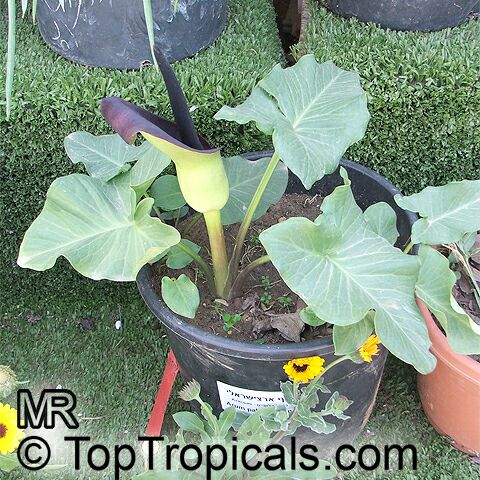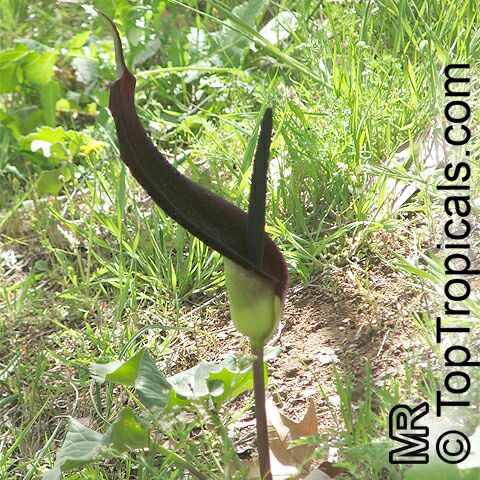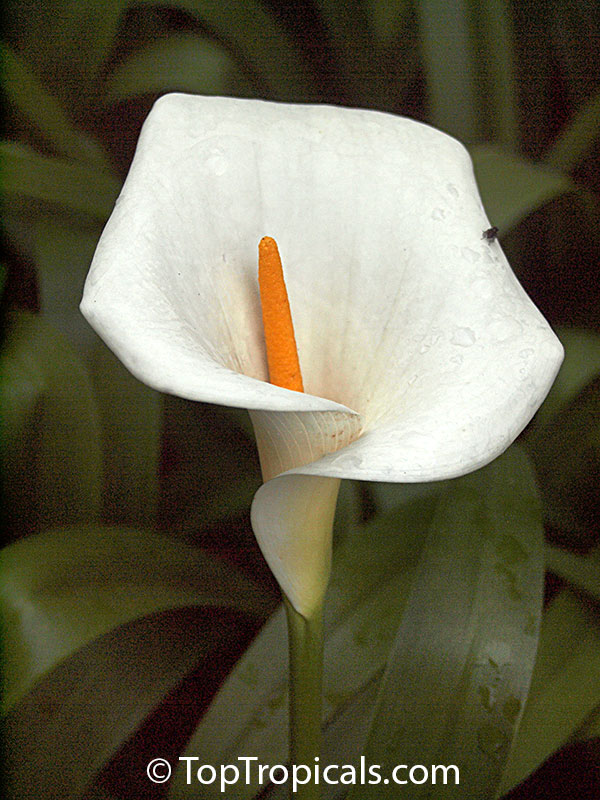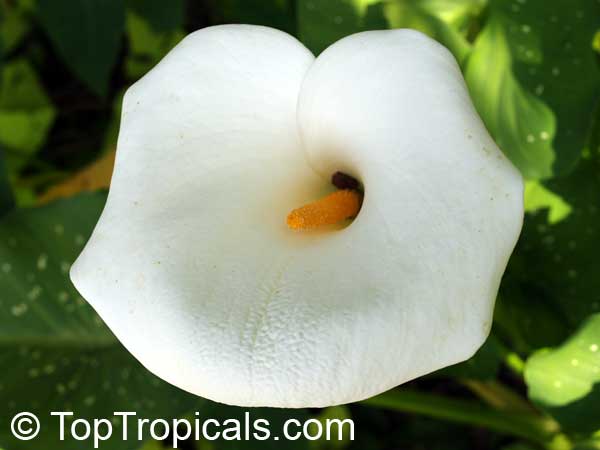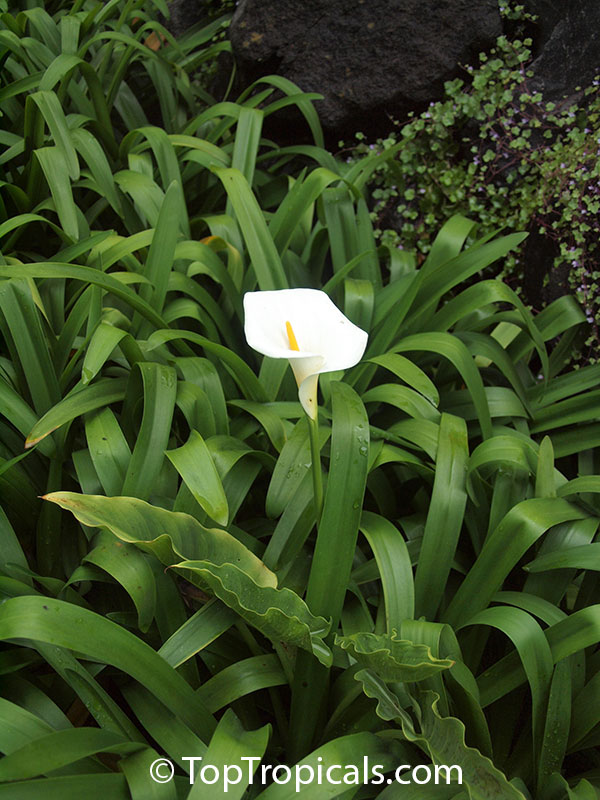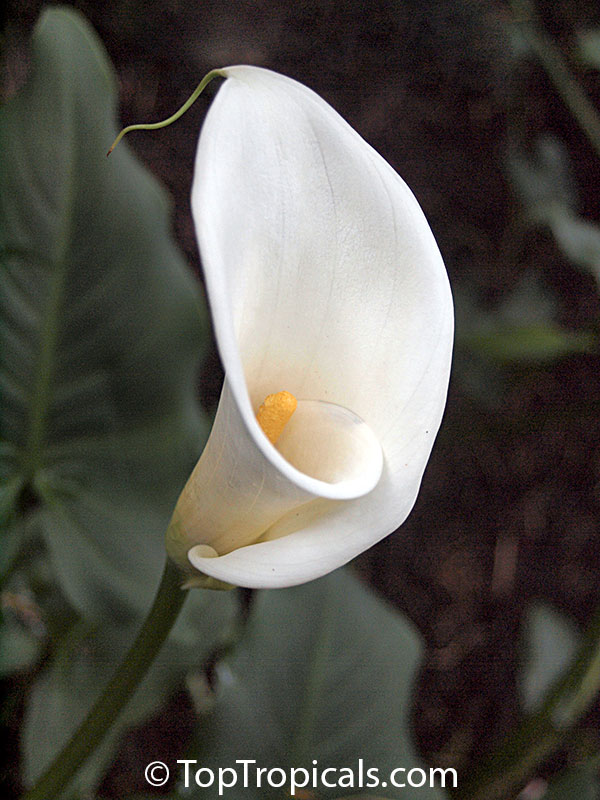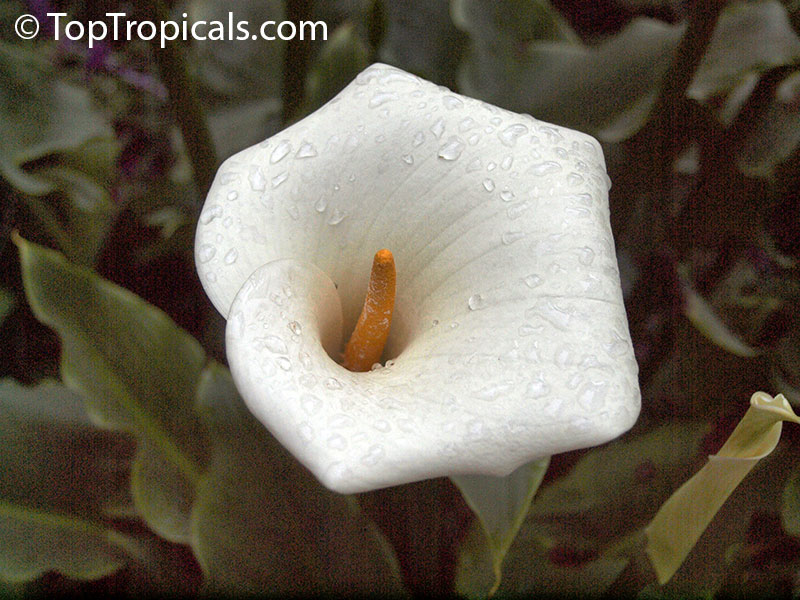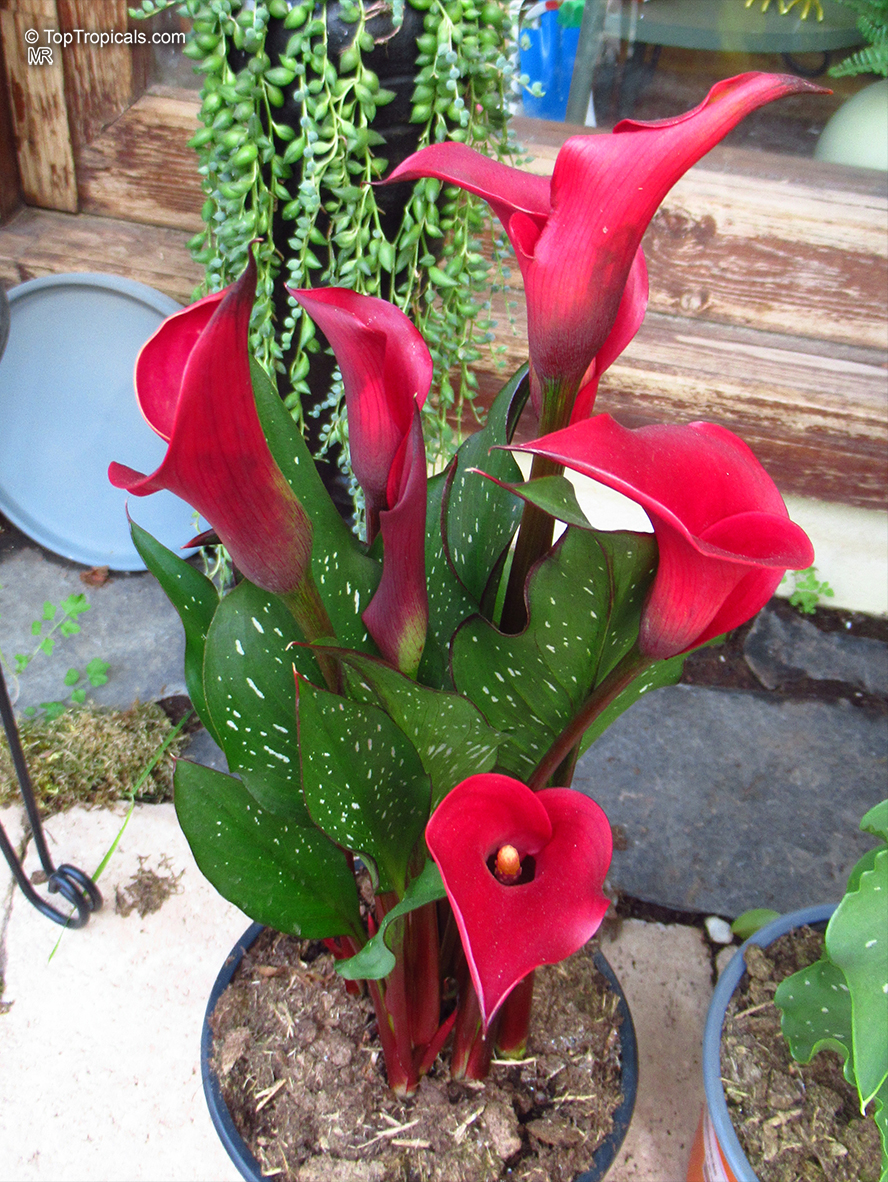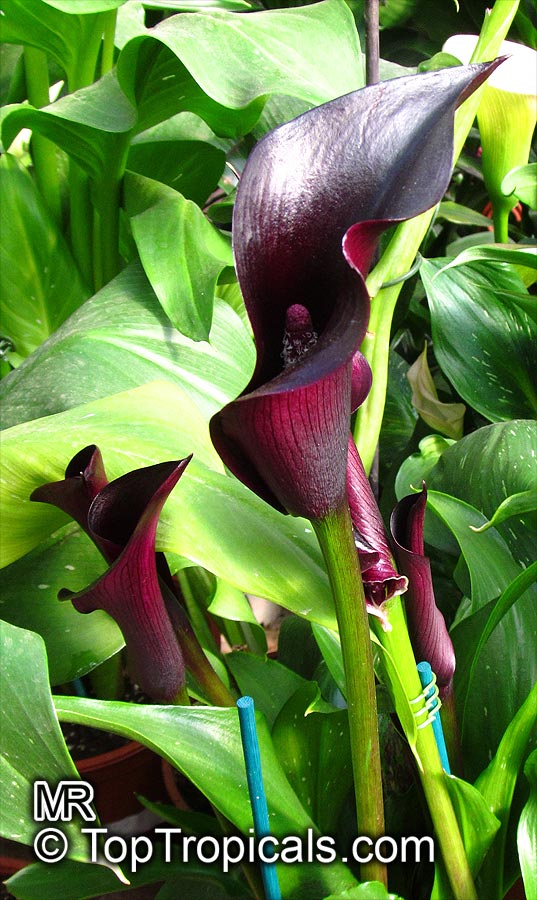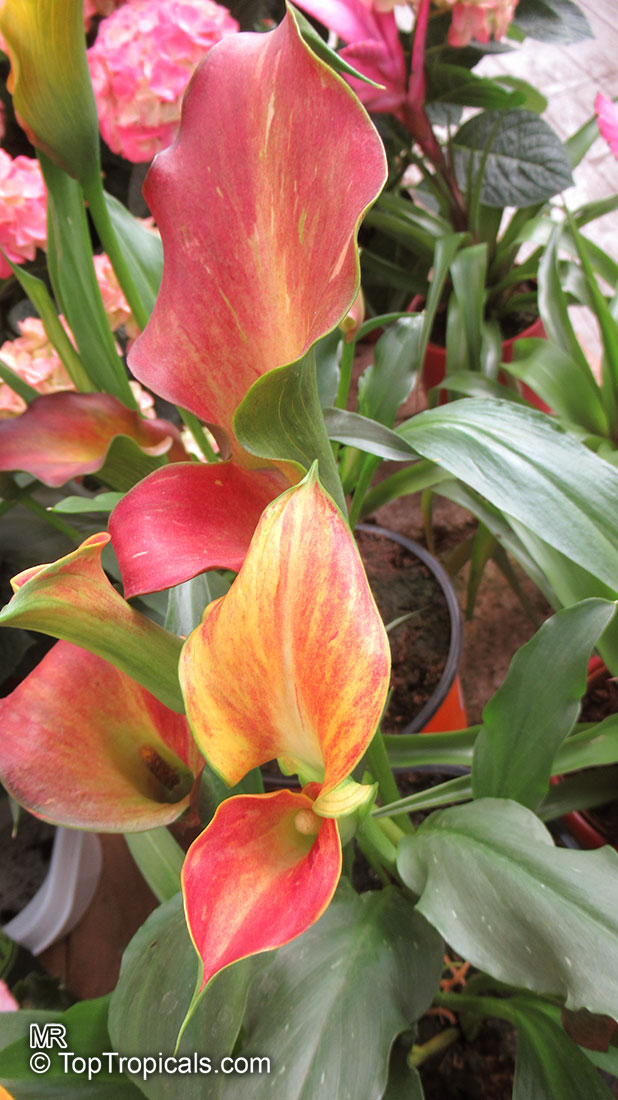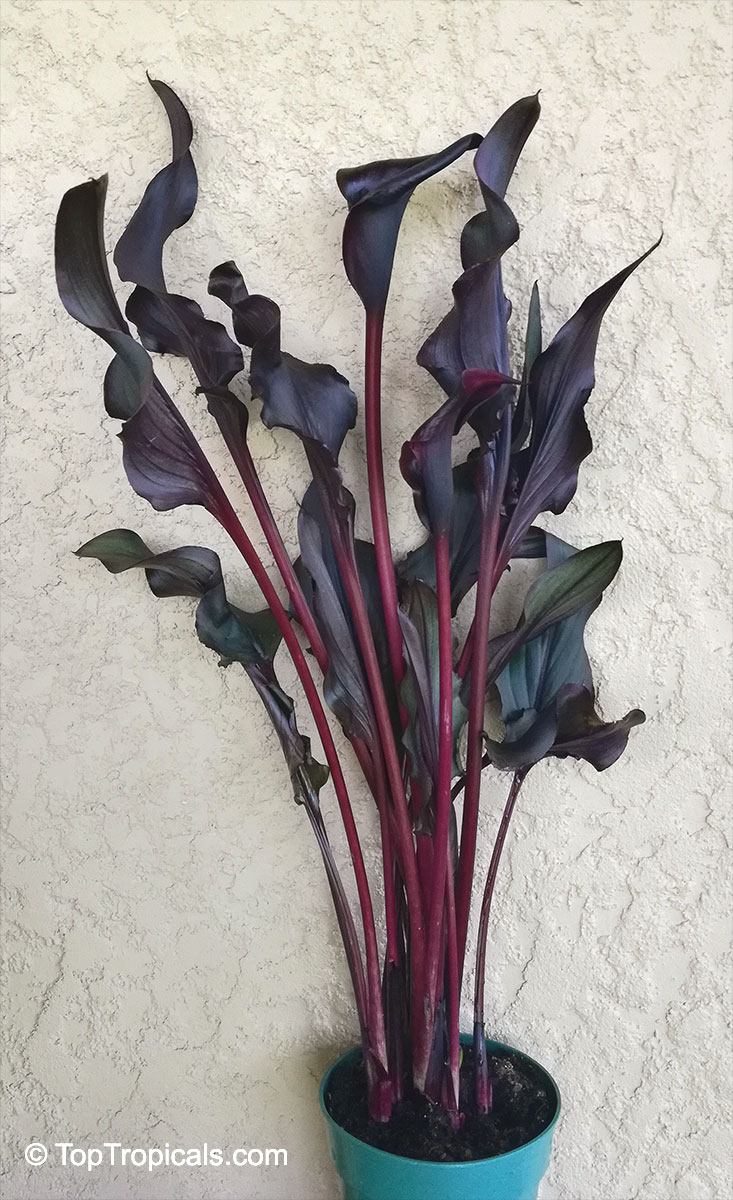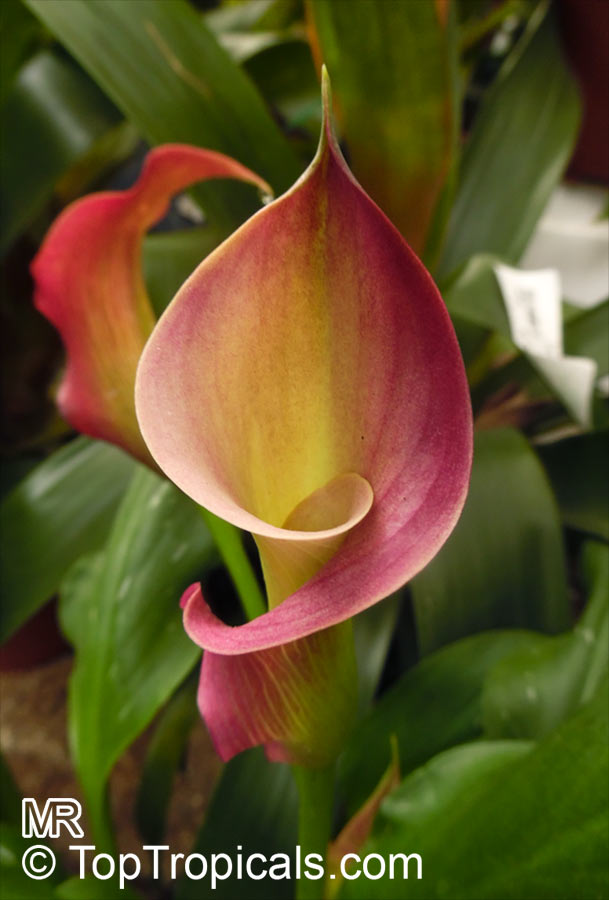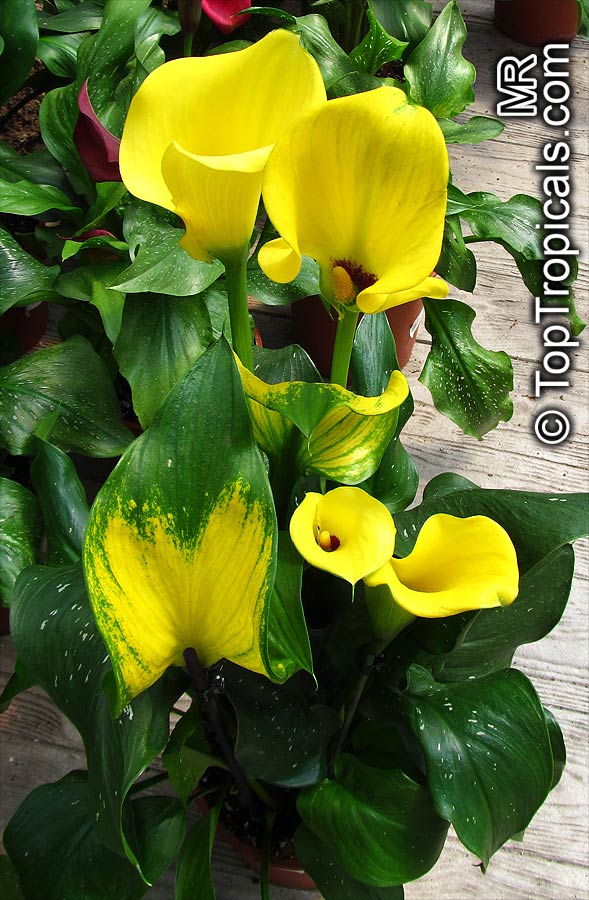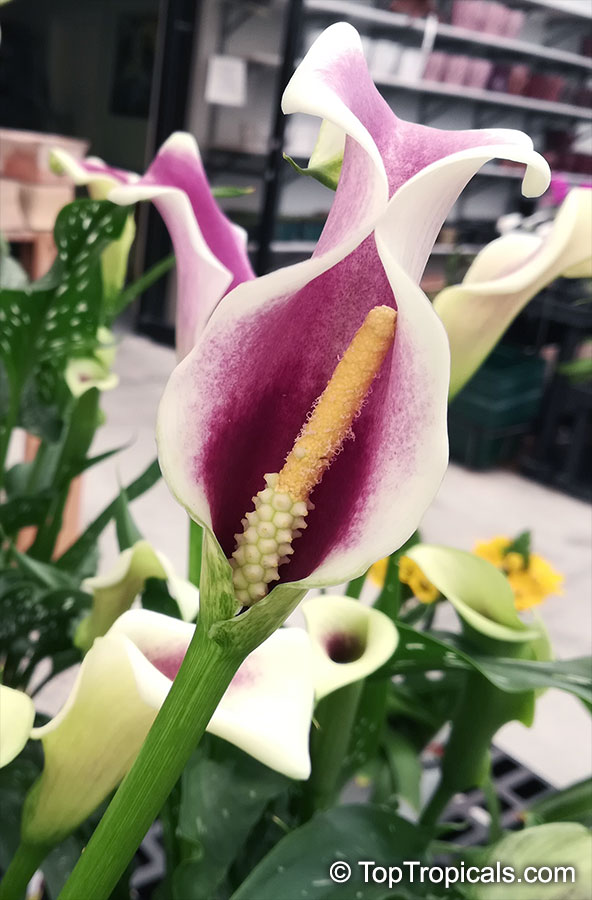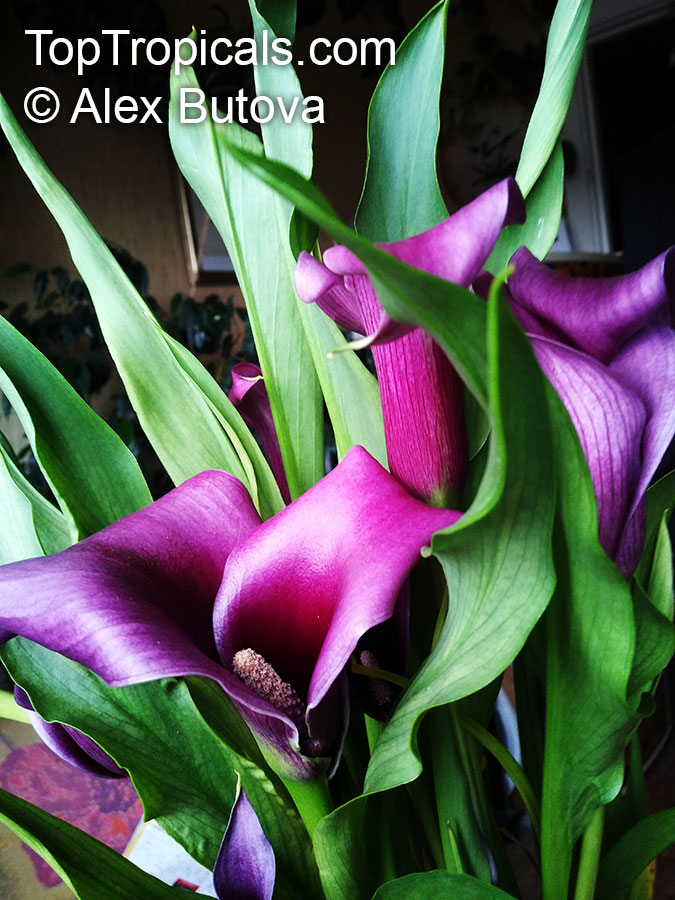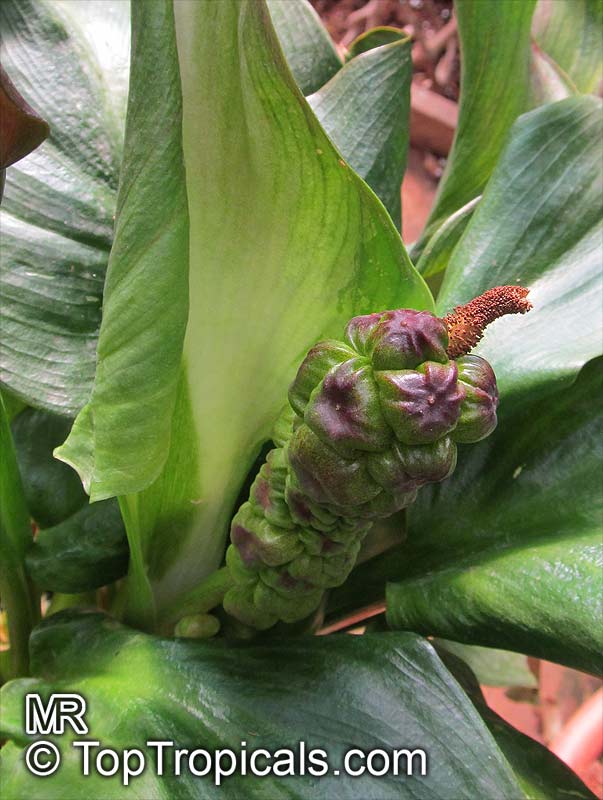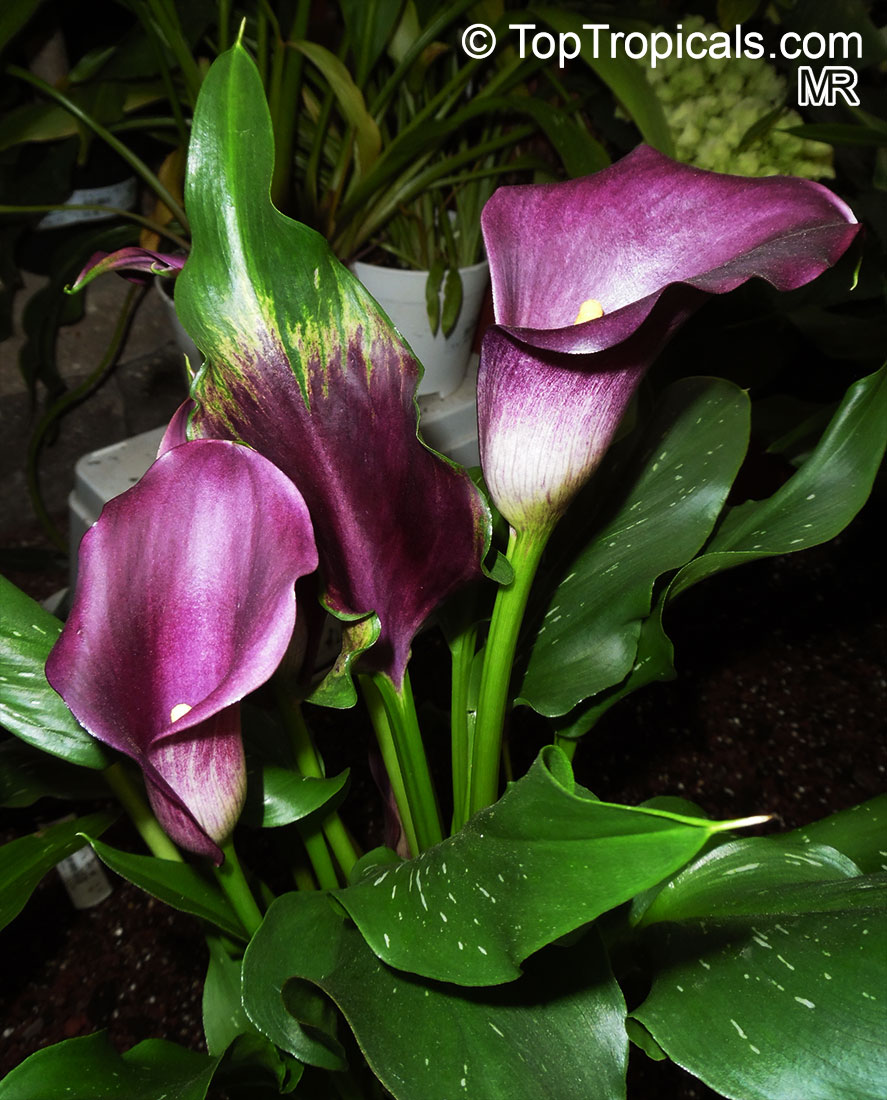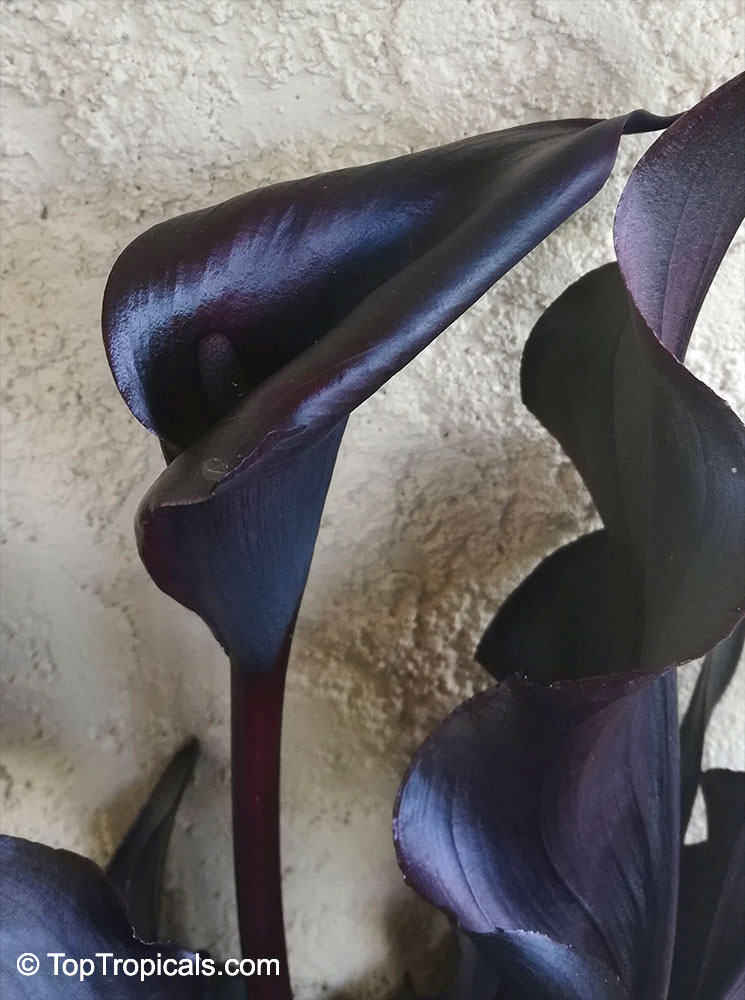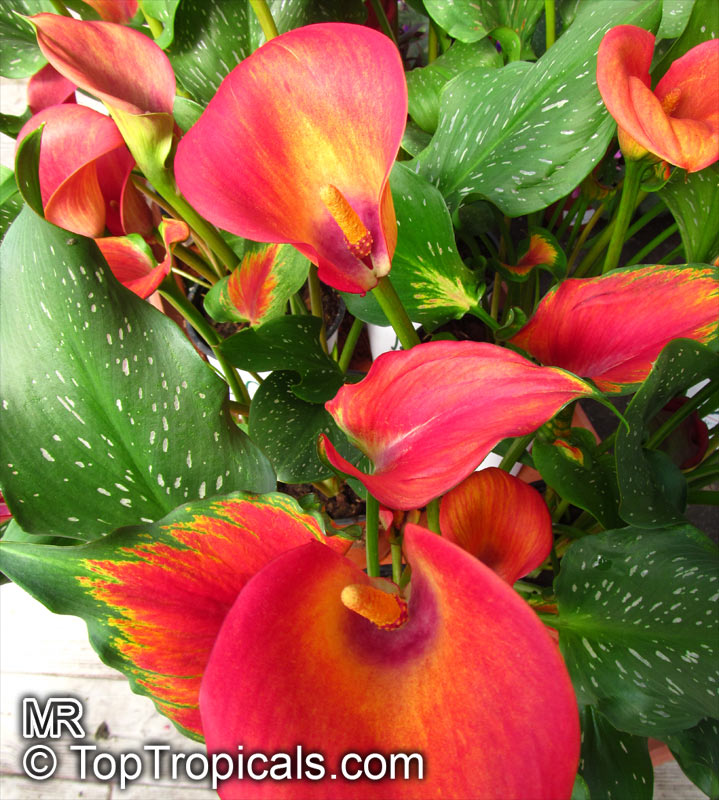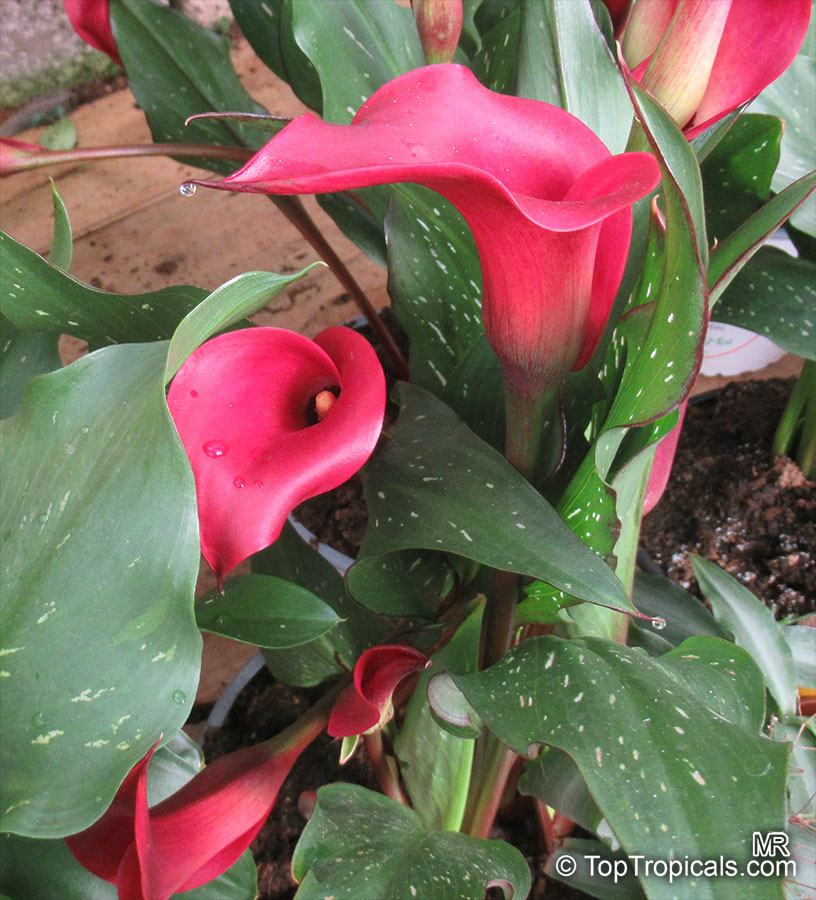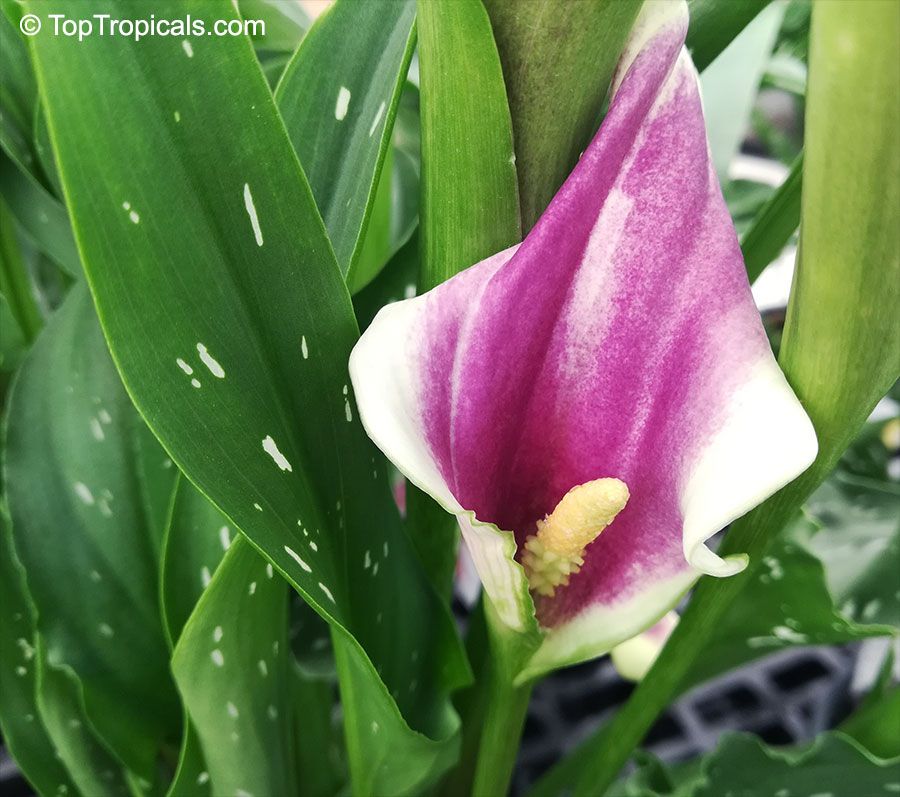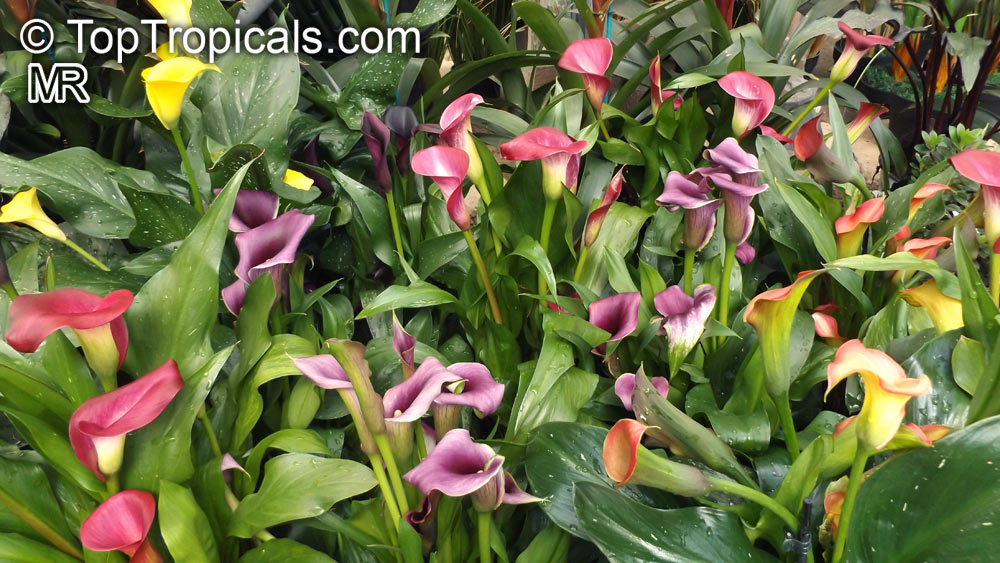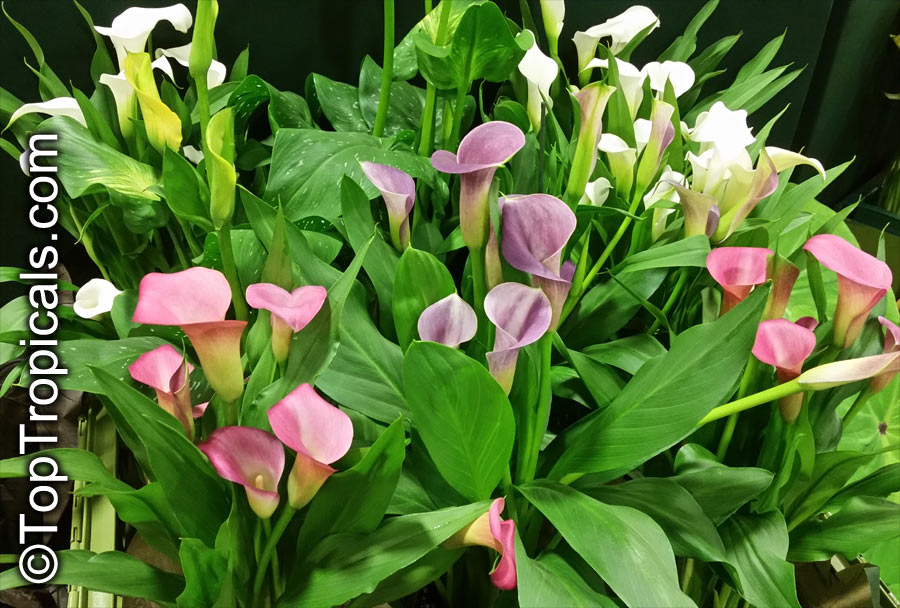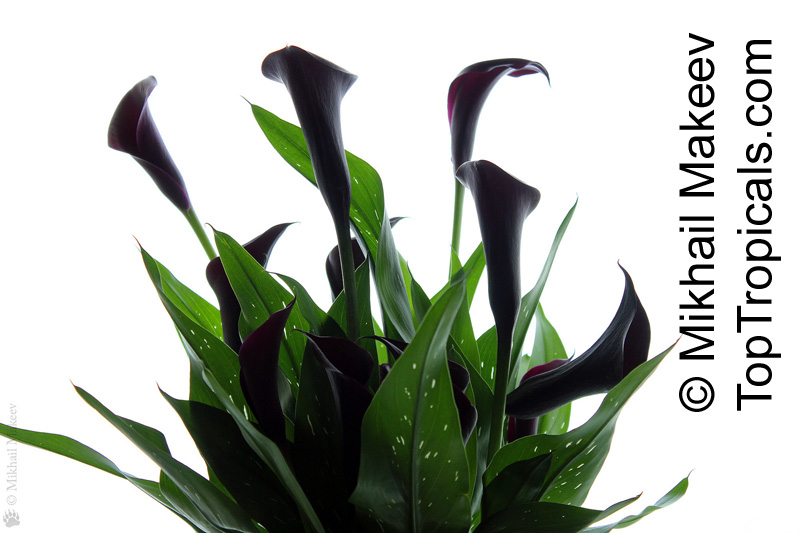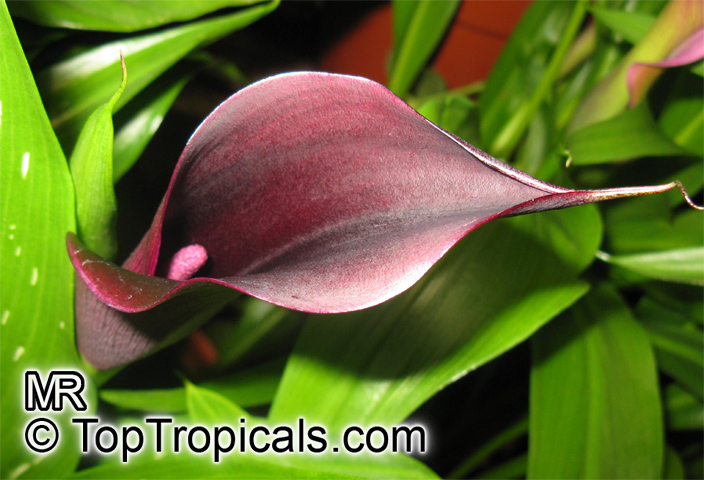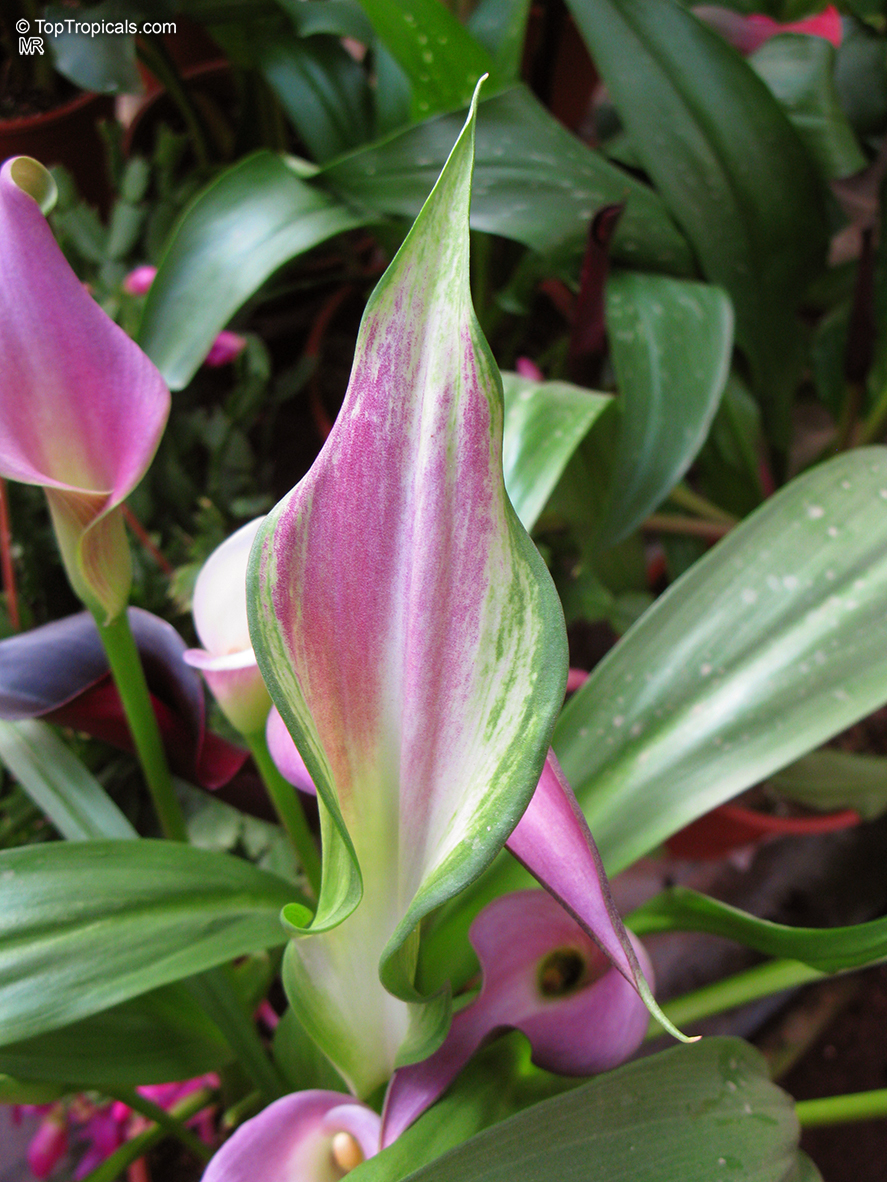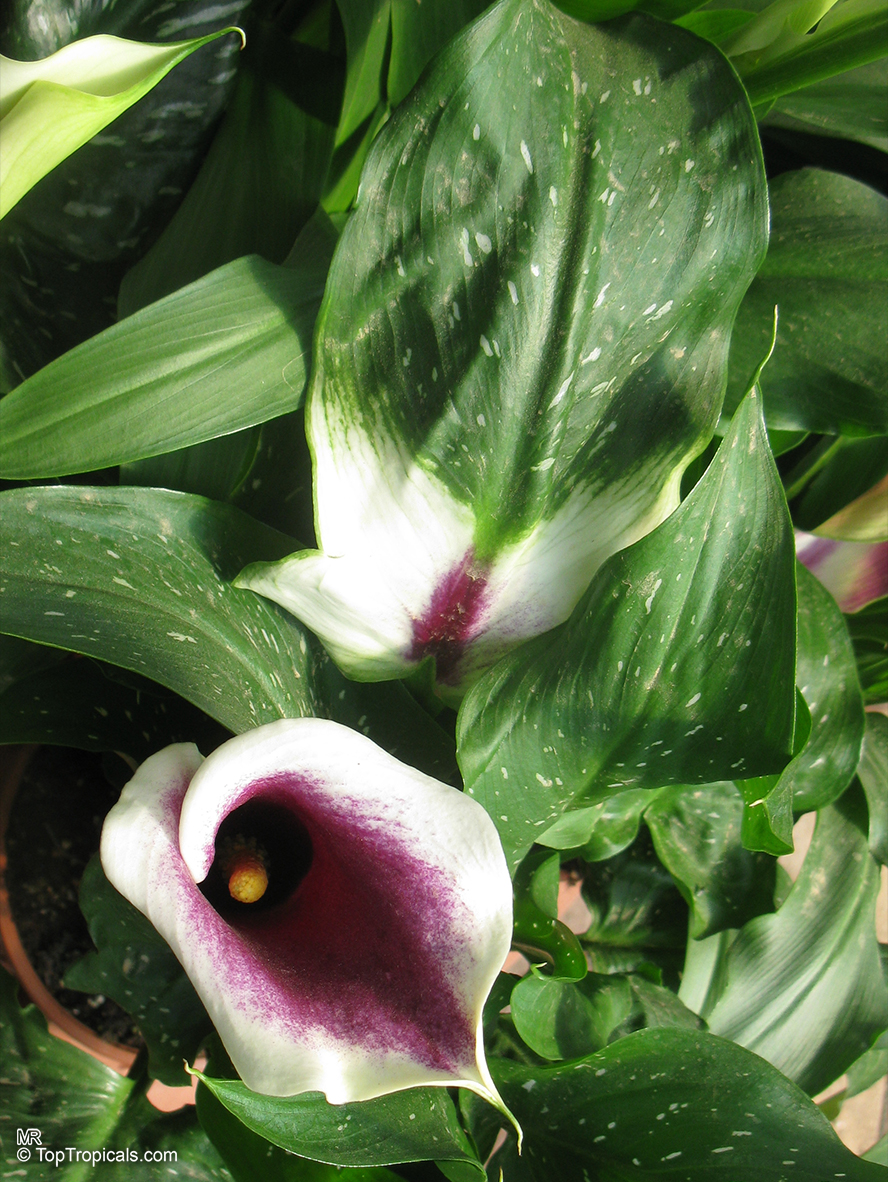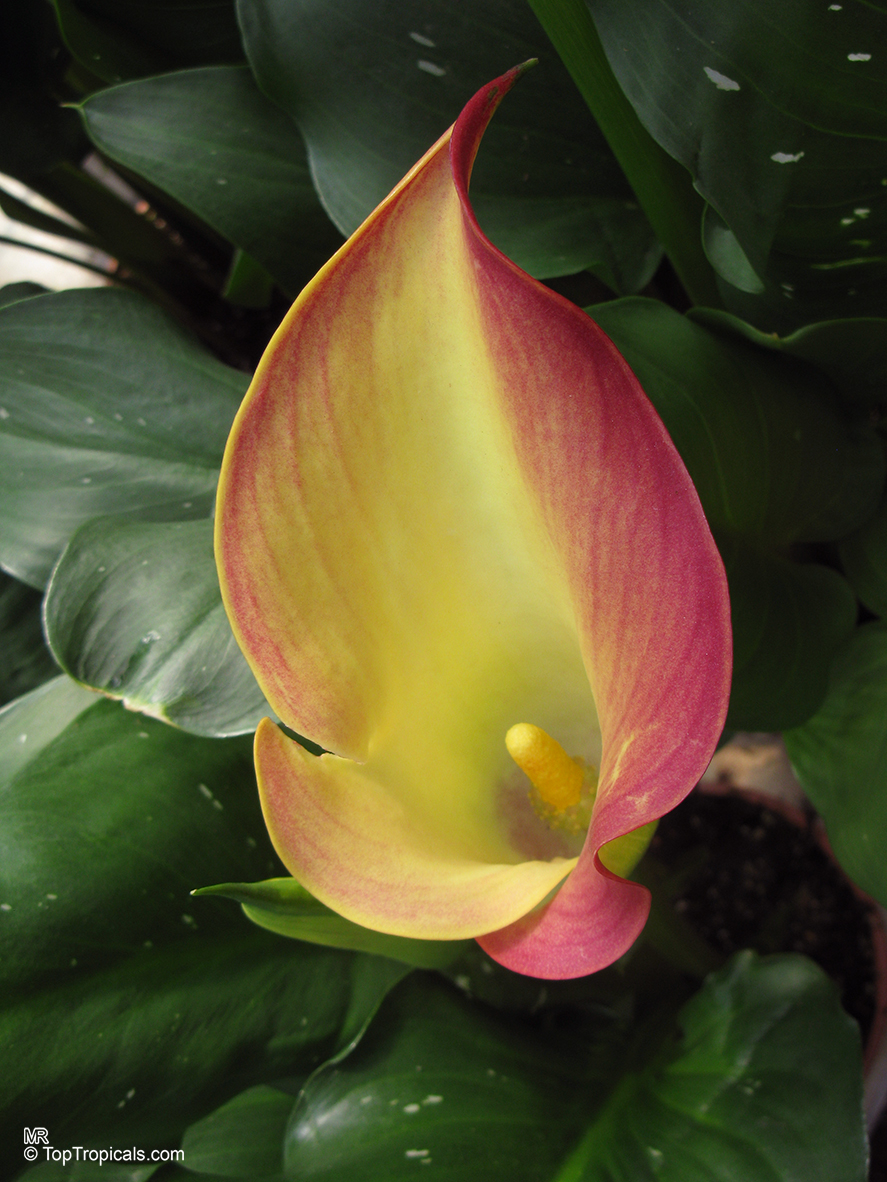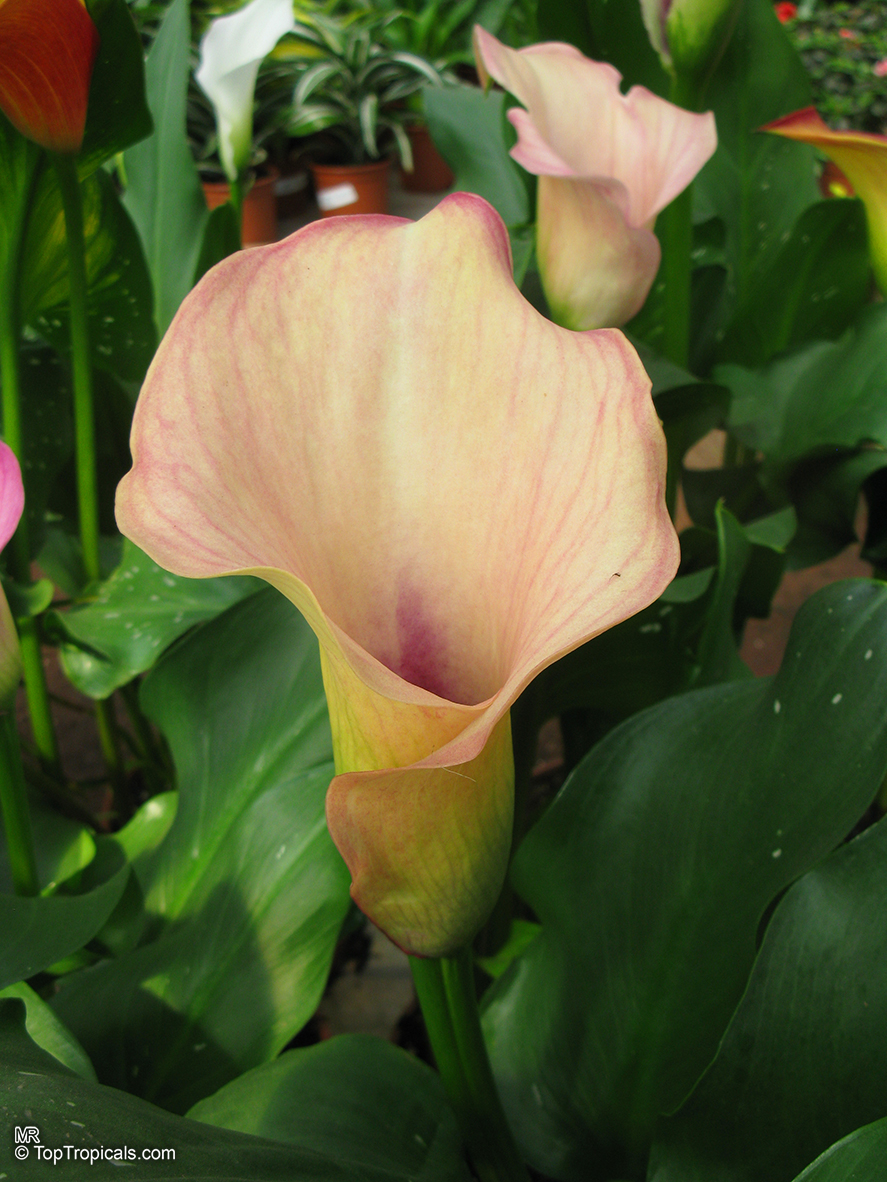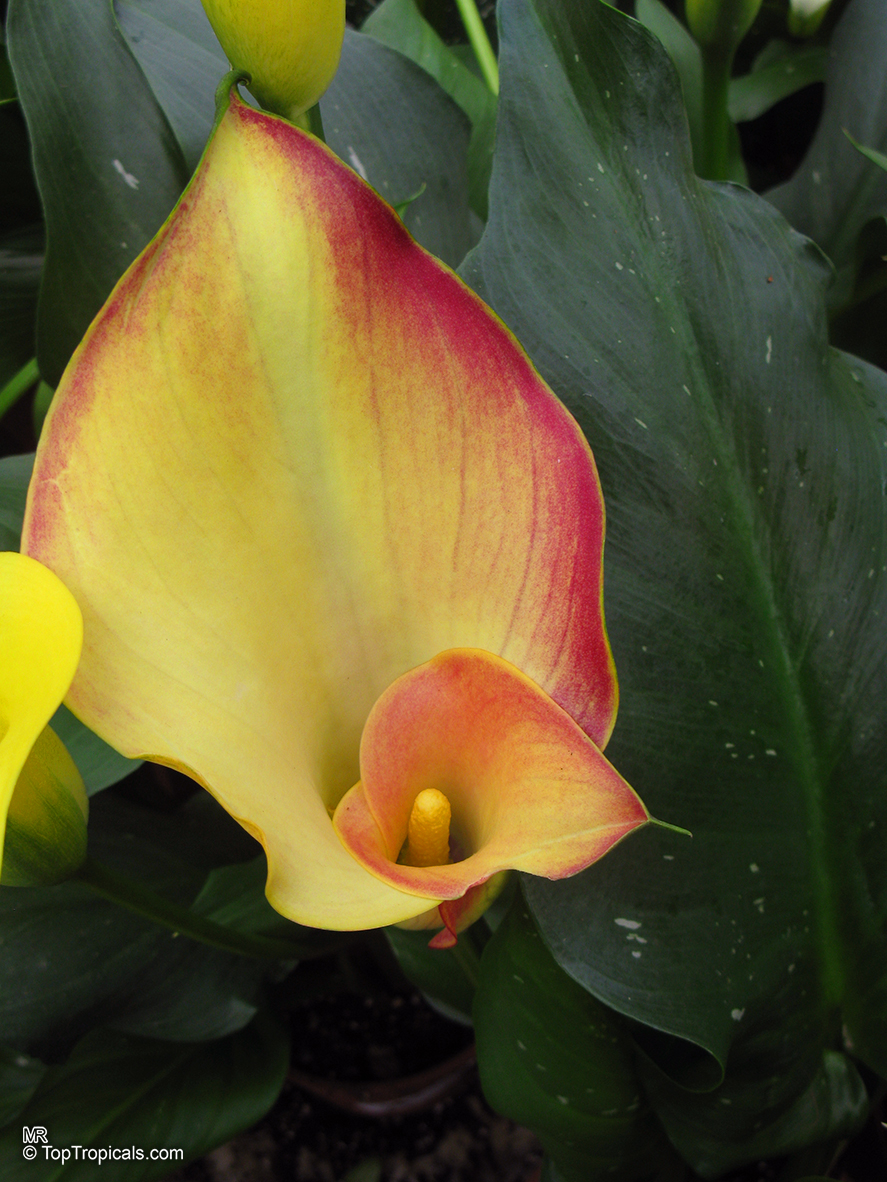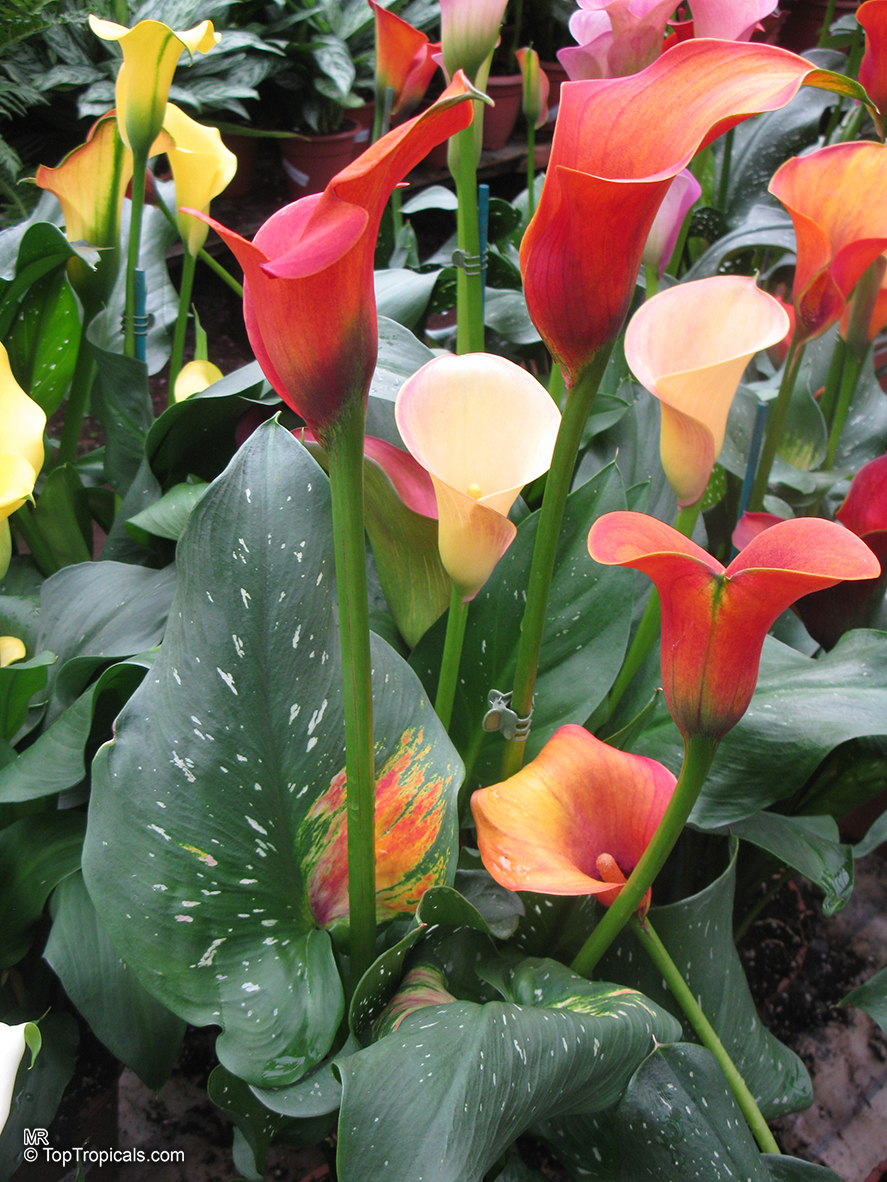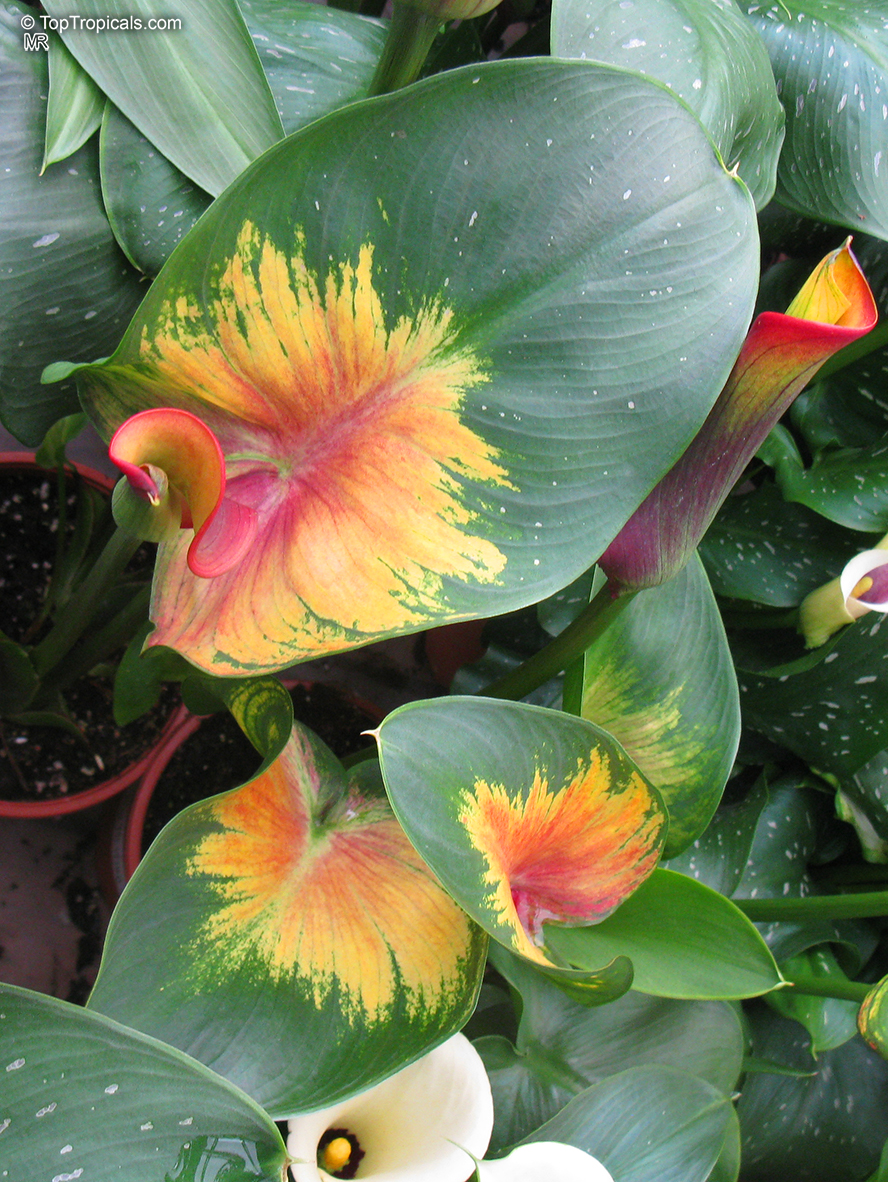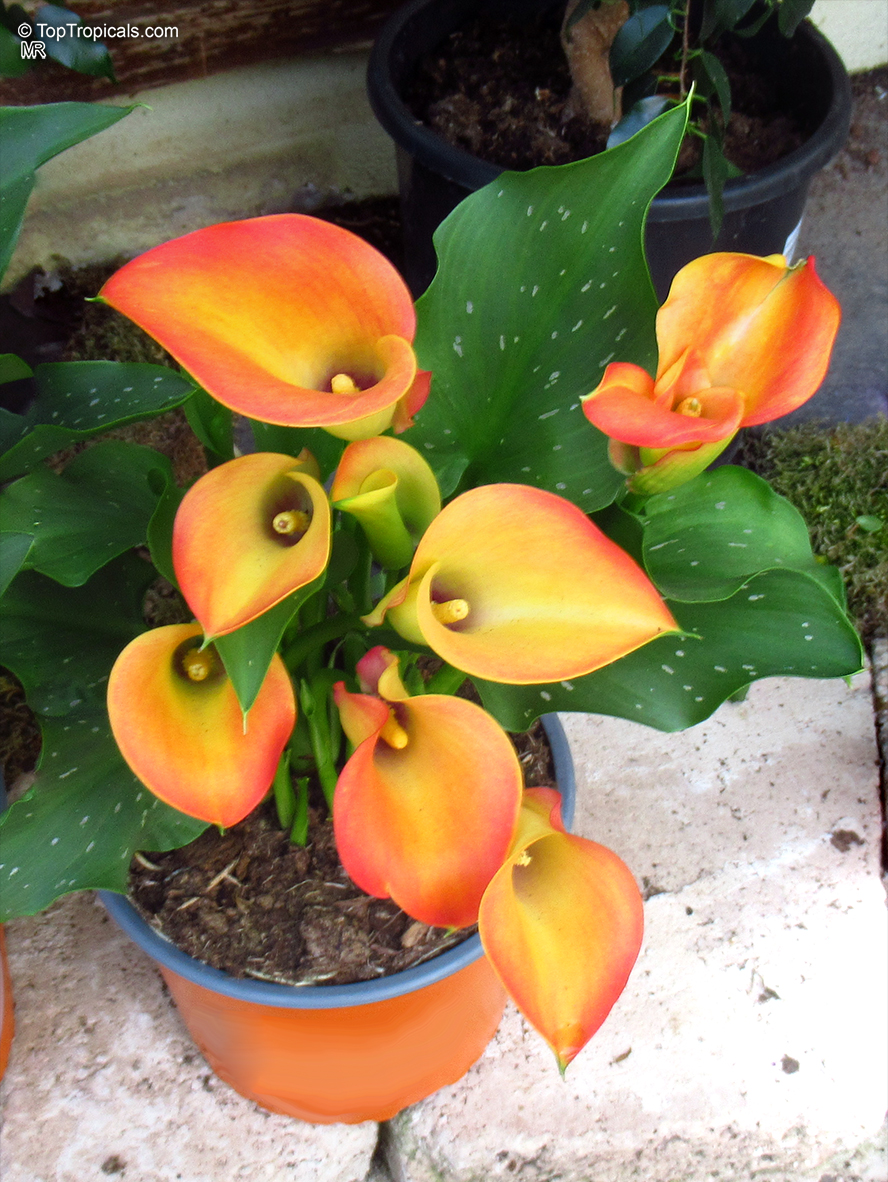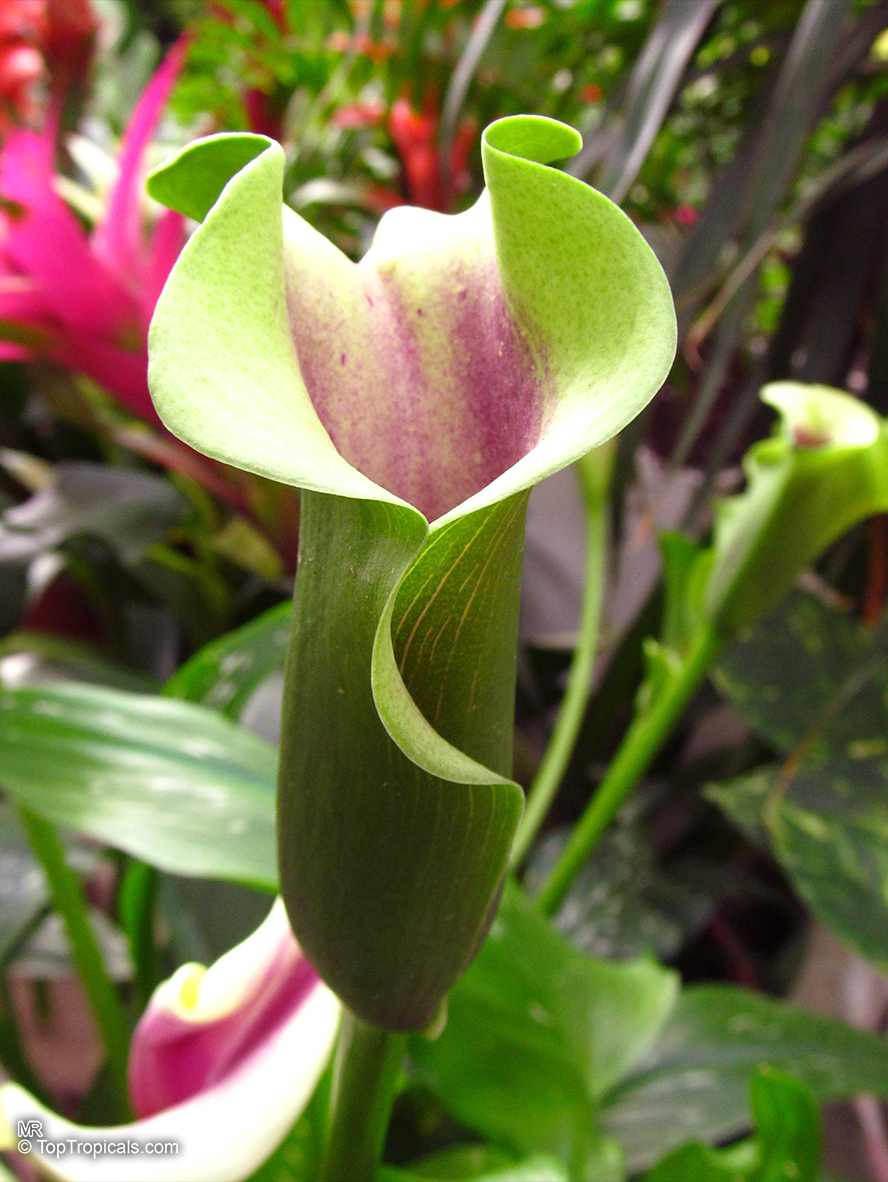Plant search results - Calla, Lily | Top Tropicals Plant Encyclopedia
| Number of plants found: 3 |
Arum palaestinum, Arum sanctum, Calla sancta
Black Calla LilyFamily: Araceae
Origin: Middle East






Arum palaestinum, commonly known as the Black Calla Lily, is a small shrub native to the Middle East. Growing to a height of 2-5 ft, it produces a unique dark purple-colored spathe with an outside that is greenish white. It is the inside of the spathe that makes it stand out, making it a popular choice for gardeners who prefer uncommon flowers.
However, this plant does have its quirks that come along with its unique beauty. It emits a strong and unmistakable musty smell, and its seed is poisonous. It is recommended that care be taken when cultivating this species due to its toxicity.
This species of flower has been used for its medicinal properties, mainly as an ethnomedical plant, dating back centuries. It thrives the most in the Middle East, however its USDA Zone is 9-11, giving it capability to be cultivated in other countries with mild winter climates.
This species prefers to be grown in a semi-shaded area, with moderate water needs. It generally begins to flower at the end of spring and with continued care can keep blooming until the end of summer. In cold regions, cultivating Arum palaestinulum in a pot is recommended. With the appropriate levels of light, water and soil this species can reach its full growth potential.
Zantedeschia aethiopica, Calla aethiopica
Arum Lily, Calla LilyFamily: Araceae
Origin: South Africa







Zantedeschia aethiopica (Calla lily) is a herbaceous perennial plant that is evergreen in regions with adequate rainfall and temperatures, and deciduous where there is a dry season. It is commonly known as Calla lilies, but is not a true lily, belonging instead to the arum (Jack-in-the-pulpit) family. These stemless plants have flowers and leaves that rise directly from rhizomes. They typically grow in clumps up to 24-36" tall, and feature large arrowhead-shaped leaves and extremely showy flowers consisting of a yellow finger-like spadix surrounded by a bright white spathe, borne atop a leafless stalk. The plant is commercially grown as a very popular cut flower.
The calla lily is winter-hardy in USDA Zone 8-10. The plant thrives in moist soils and full sun to part shade. In colder regions, containers may be overwintered outdoors in a sheltered location, sometimes with some protection, and brought back indoors before first frost. When grown year-round in containers, the plant must be brought indoors in winter before the first frost. Overwintering containers placed near a window with bright indirect light can make attractive houseplants.
For best performance, calla lilies require moist soil and bright light. Fertilization should be done regularly, monthly during the growing season. Propagation may be accomplished by division of rhizomes in early spring or by seed. The plant reseeds freely, often with variable results, and may self-seed and become weedy in some areas. It is important to exercise caution as all parts of the plant are poisonous and may cause skin irritation. Calla lilies may also be planted in mud at the edge of ponds or water gardens.
Zantedeschia sp.
Arum Lily, Calla LilyFamily: Araceae
Origin: South Africa


















This is an old fashioned, but very rewarding garden plant. Zantedeschia is named after Professor Zantedeschi, probably Giovanni Zantedeschi, 1773-1846, an Italian physician and botanist. The flowers are faintly scented and this attracts various crawling insects and bees which are responsible for pollinating the flowers. The spathe turns green after flowering and covers the ripening berries. It rots away when these are ripe and the succulent yellow berries attract birds, which are responsible for seed dispersal. The rhizome is large and eaten by wild pigs and porcupines and the ripe fruit enjoyed by birds. Raw plant material causes swelling of the throat because of microscopic, sharp calcium oxalate crystals. The leaves are used as a poultice and a treatment for headaches. May be used as a marginal plant along streams, or on the edge of a pond. Plant in partial shade if there is no permanent water. It can be planted as a foliage plant in deep shade under trees but will not flower well in this position. It is fast growing and likes very rich, well-drained conditions. It is an excellent cutflower and lasts a long time in water. Nowadays there are other forms of this species which will enliven an old theme. There is also an attractive form with leaves spotted white. Requires consistently moist soil.
Use link to repeat this search:
https://toptropicals.com/cgi-bin/garden_catalog/cat.cgi?find=Calla Lily&search_op=and&keyword_op=and&language=e&number=10
&no_change_lang=1&user=tt&sale=1&first=0

